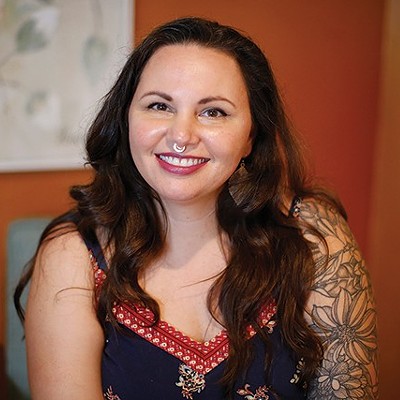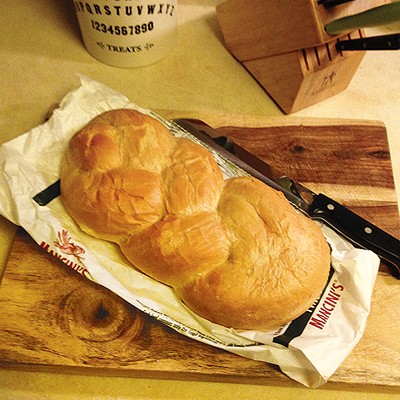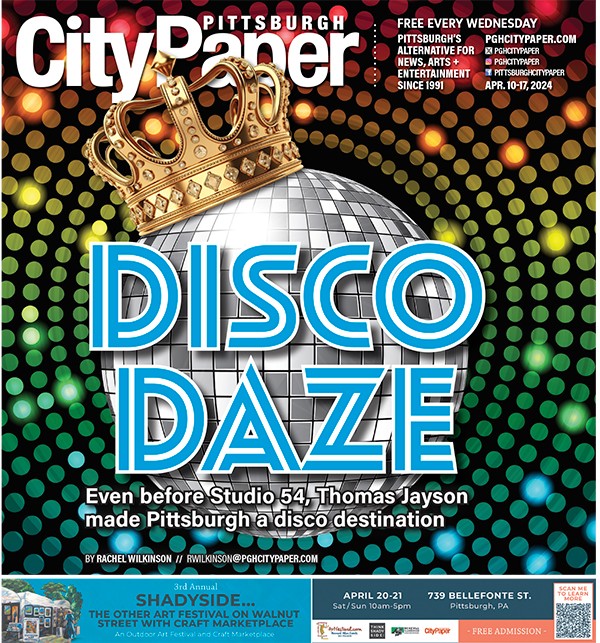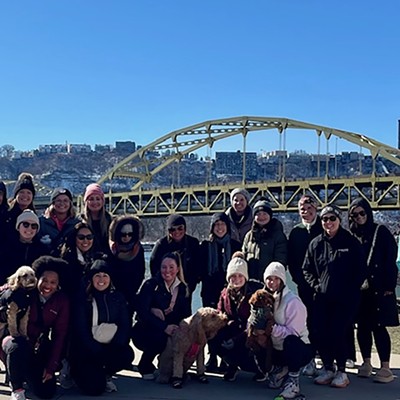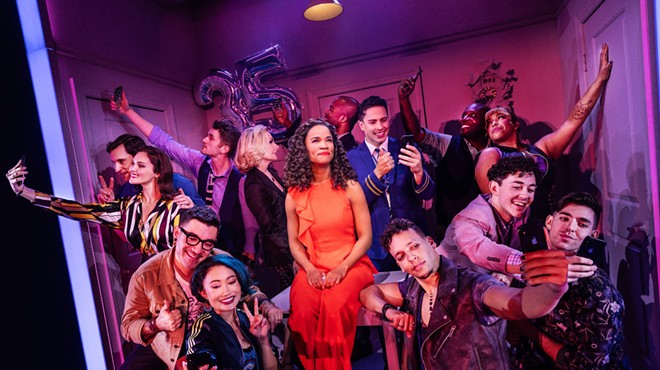The Audiotronics Tutorette is an antiquated language-lab tool -- one designed to read aloud magnetic audio strips printed on sturdy flashcards. It wasn't designed to be skinned open, so Margaret Cox could manipulate its innards until they produced a series of glitchy chirps, squiggles and moans.
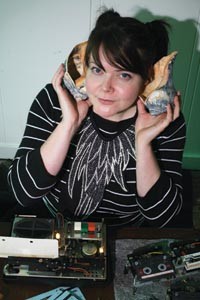
Margaret Cox
Years in Pittsburgh: 17
Primary instruments: Audiotronics Tutorette and magnetic cards, modified cassette players, accordion, found sounds
Musical style: Sounds like someone listening to tiny noises
Musical influences: Oum Kalthoum, Daphne Oram, Cathy Berberian, Yma Sumac, New Order, Soft Machine, Han Bennink, Alice Coltrane, U-Roy, Willie Nelson
What types of events do you prefer to play/put on? "It's great to play for new or accidental audiences. I played a show with Rick Gribenas, 8Cylinder and Shambolish at Pittsburgh Filmmakers where a group of people came out of a film showing and stopped in. They may not have all planned to be there, but you could tell something special happened."
Upcoming activities: Live broadcast on Advanced Calculus WRCT 88.3 FM with Michael Johnsen, 9 p.m. Mon., March 15.
Web site: http://bit.ly/9Kp4uW
Cox has dubbed over the old educational cards with her own found sounds, flicking them past the tape heads to produce her own effects. Her live performances can incorporate the Tutorette, two similarly eviscerated cassette decks, a manually operated turntable, amplified objects, perhaps an accordion. "Essentially, I have a lot of crap that makes sound," says Cox.
These improvised electronics are closely related to her undergrad and graduate study in electronic media at Carnegie Mellon University -- she also works at CMU's Miller Gallery -- and to a hypersensitivity to sound that goes back to her childhood. But Cox is just one of many local musicians bent on pushing the boundaries of music and composition, and expanding our understanding of sound.
Some of her fellow explorers say that the local experimental scene is created largely for, and by, other musicians. "Ninety-nine percent of the people who go to these shows as fans are playing at a show the next night," says Josh Beyer, a local musician and instrument-builder, currently in Chicago studying to be a luthier. Even for them, the rewards can seem elusive. "A lot of experimental shows I go to, the experiment didn't work!" he says, laughing.
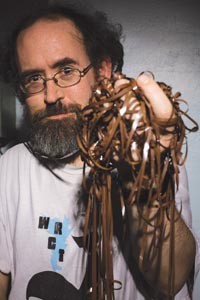
Steve Boyle
Years in Pittsburgh: 20
Primary instruments: Percussion, tapes (edited by hand), microphones, signal processing, amplification, bowed/struck/sounded metal/wood/plastic/cardboard
Musical style: "Personal. It's just what I'm interested in."
Musical influences: "Friends are most important."
What got you started in experimental music? "The combined influence of older friends involved in the 'cassette culture' and college radio. [Experimental] tickled me in a way that 'music' didn't. I continued to dig and search and wonder."
What types of events do you prefer to play? "No particular preference. It's nice to play in front of/with people I've never met."
Experimental music can be difficult to follow. Lots of it is more interesting to talk about than to hear -- which may be why "experimental" or "avant-garde" music has so many subgenres. Do you like drone metal? New Music? Improv? Electronic? Progressive acoustic music? Noise? What kind of noise?
But even if you never listen to their works consciously, many of the ideas kicked around by experimental musicians trickle down to the mainstream and are incorporated into mass culture. (For example, tape collage or musique concrete may have been avant-garde when first developed in the late 1940s, but nobody raises an eye when Wilco incorporates it.)
Cox, for one, believes an audience can be cultivated in Pittsburgh, through a more educational, hands-on approach that empowers people to create and tinker on their own. "There's a physicality to it that people are hungry for," she says -- a direct involvement that's increasingly rare in a world of laptops and iPods, where the push of a button seems our sole participation.
And Cox tries to keep an open mind about the value of the work. For her, a successful experiment or improvisation can be simply a strong feeling that "something happened." And it goes on happening -- more often than you might think -- in Pittsburgh's art galleries, university concert halls and rock bars, and over the airwaves.
At first glance, the local band assembling its equipment on the small stage in the back room at Gooski's seems fairly standard: drums, bass, electric guitars, keyboard, mics for vocals. And when the five-piece group kicks into a tune, it doesn't seem radically different from the T. Rex on the bar's jukebox.
But Tusk Lord isn't your standard rock group. It's more like a band that set off in one direction and walked far enough that it rediscovered its own footsteps. Periodically, the rhythms break down, and the instruments move slowly back and forth between a couple of chords -- a slow, swelling seesaw that's more in line with minimalist drone music than rock.
Tusk Lord's driving force, Mike Kasunic, started off playing noisy, relatively free-form music. But "the more recent material has been structured songs with lots of instrumentation," he says. The music "is just a mix of what I'm into at the time," he adds.
Tusk Lord, says Beyer, is one of a few local noise-based performers (he also cites Nick Painter) to have moved toward more conventional songwriting. "There's still this noise element, they're not just layering and looping noise."
Beyer suggests that one way to appreciate experimental musicians is to think in terms of movement -- where they've been, and where they're heading. Groups like Tusk Lord, which are rooted in a punk ethos, may be moving toward structure out of something more chaotic and wild. Meanwhile, the music coming from a more academic or fine-art context -- such as the various New Music ensembles in town -- can be seen as heading in the opposite direction: moving away from traditional technique and theory toward something more expansive or transgressive.
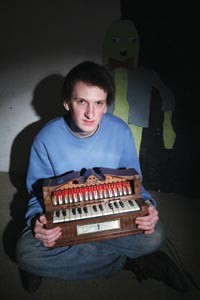
Mike Kasunic, a.k.a. Tusk Lord
Years in Pittsburgh: 2
Primary instrument: Guitar
Musical style: "Just a mix of what I'm into at the time. The more recent material has been structured songs with lots of instrumentation."
Musical influences: Neil Young, Brian Wilson, Brian Eno, Henry Barnes, Michael Nyman, Angelo Badalamenti
What got you started in experimental music? "My brother got me into Sonic Youth during middle school. This led to interest in bands like Wolf Eyes and Hair Police because of Sonic Youth's connections with DIY experimental/noise bands. I don't really play too much noise stuff anymore, though."
What types of events do you prefer to play/put on? "I generally prefer house shows as long as there is some sort of working PA system."
Web site: www.myspace.com/tusklord or freemusicarchive.org/music/Tusk_Lord/
In Pittsburgh, "there's a fair bit of variety and approaches to noise, improvisation, experimental music -- whatever you want to call it," says Steve Boyle, musician and founder of the Radio Free Radio show on WRCT.
Since 1996, Boyle has broadcast a blend of experimental music and contemporary composition, sometimes mixing several sources and turning the broadcast itself into a unique, unrepeatable performance. "Sometimes it's not even commercial releases," Boyle says. "There was one show where for an hour and a half, it was just hiccupping, teaching a bird how to talk, stuff like that." Boyle has also performed in the band Dead at 24 and in an improv group with veterans of the scene including tENTATIVELY, A cONVENIENCE and Michael Johnsen.
Boyle insists that interest in experimental music in the area is larger than you might guess from the attendance at, or frequency of, shows around town. (Tusk Lord's show, for instance, had Gooski's about half full -- and that's with another well-known local, Microwaves, and a noteworthy touring act on the bill.)
"There are a lot more people who listen to noise, for instance, or are interested to some degree in noise, improvisation, experimental music, than you may be led to believe," Boyle says. "It's not really a social music -- it doesn't always get you dancing. It's not really conducive to hanging out and talking. It's just ... not."
So, what is it for?
On a Thursday night, a half-dozen men -- ranging from high school age to early forties -- have gathered in the print shop of the Pittsburgh Center for the Arts. Seated on the cold metal chairs are a software designer who builds modular synthesizers from kits in his spare time; a classical pianist interested in electronic music; and a student who describes his interests as including "neuroscience and robots. And music."
They're all pupils of Michael Johnsen, here to learn the basic elements of creating and manipulating electronic sounds. It's the first night of Circuit Building II, and Johnsen begins by holding aloft the device they'll build by the end of the course: a cigar box oscillator with several knobs, dark strips and an attached stylus.
The sounds it produces are a bit like those of the Stylophone, a toy instrument famously used in David Bowie's "Space Odyssey," except its parameters are much more flexible. Johnsen has chosen this class project to reach both engineers and musicians, and tastes both conventional and more idiosyncratic.
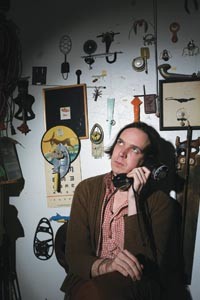
Michael Johnsen
Years in Pittsburgh: 40
Primary instruments: Electronics, singing saw
Musical influences: Incapacitants, Rosa Ponselle, Charles-Valentin Alkan and "the way that robins run"
What got you started in experimental music? "I haven't gotten started yet."
What types of events do you prefer to play/put on? "I like playing to strangers; dislike glad-handing. I was token adult (or honorary kid) at a kids-only concert."
Upcoming activities: Solo at the Seattle Improvised Music Festival, Thu., Feb. 18. Live broadcast on Advanced Calculus WRCT 88.3 FM with Margaret Cox, 9 p.m. Mon., March 15.
"You could play tunes with it if you want to," he says, tapping out a short melody with the stylus. "Or not, if you want to." But first, there's theory to go over, and Johnsen breaks out the oscilloscope and begins drawing wave forms on the dry-erase board.
When teaching the circuit-building classes, Johnsen says, he encounters a surprisingly broad range of musical interests -- indie rock to hip hop, noise musicians to synthesizer-builders. Ages vary as well: Some summer workshops he's taught have involved kids as young as 9. Whether in public classes or private lessons, Johnsen teaches "practical solutions" derived from his long study, rooted in experimental film and photography.
"I try to be kind of non-prejudicial from an aesthetic point of view, and say, 'These are some of the tools that are available, what do you think you can make out of that?'" Johnsen says. "That in itself I think is, for lack of a better word, an experimental attitude. You're not ruling anything out. And I think that kind of an attitude, where you're not telling people what the applications of their knowledge are, tends to encourage an audience for exploratory music."
Pianist Danny English, one of the students, is a home-schooled high school senior who hopes to pursue composition in college. As his tastes have gravitated toward 20th-century composers, he's become increasingly interested in "how modern technologies are incorporated into what could still be called 'classical' music," he says. "This stuff fascinates me."
Although Johnsen teaches in an educational setting, he doesn't have formal music training. He's a self-taught tinkerer, and he takes a broad view of exploratory music. At one point in the class, he jokes, "I don't know anything about music -- just this stuff."
"There's an experimental music that comes out of a punk mentality, especially the noise-scene stuff, which is very strongly based in an attitude and an image and packaging," Johnsen says. "And then there's this more academic experimental music that has a tendency to seem dry or uncool. I've never really seen the point of joining one of those camps and deciding the other one is bad or something."
And if anything, he says, those categories are less important in Pittsburgh -- in part because the stakes are low here.
"If you go to New York or to Paris or a lot of other places, there's a sense that you have to compete with the other performers that might broadly fit into your category," Johnsen says. "And there's nothing worth winning in Pittsburgh. The reason to put on a show is because you want to get together and do something," not as part of a competition for resources or prestige.
"When our spirits are up, we can get a lot of interesting things done that are maybe more vital or potentially sincere."
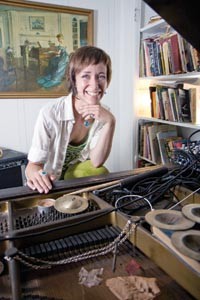
Melissa St. Pierre
Years in Pittsburgh: 1.5
Primary instrument: Piano
Musical style: "My new thing is recording samples on the prepared piano and inputting them to an Oxygen 8 synthesizer, which is much handier for touring."
Musical influences: Birds, trains, metals
What got you started in experimental music? "I started playing experimental and jazz music in middle school after I heard Thelonious Monk and Tony Conrad on college radio."
What types of events do you prefer to play/put on? "A street corner, a Laundromat, a basement gallery, someone's warehouse ... you tell me."
Upcoming activities: "We'll be putting together some kind of record-release shows for Technical Drawings later this year; we have a vinyl-only release coming out on a German electronica label, Gagarin, and inclusion on The Wire Tapper [compilation] in April. "
Web site: melissastpierre.bandcamp.com or www.myspace.com/melissastpierre
There's an army of other local musicians who are engaged in that work, such as Hyla Willis, Edgar Um Bucholtz, Matt Wellin, 8Cylinder and many others. Some work across several disciplines: David Bernabo, for example, composes for Alia Musica while running an avant-garde record label, Abstract on Black, and playing Brillobox with his art-rock band Assembly. Many of those talents, such as Mike Tamburo, have been featured before in City Paper. Manny Theiner (a frequent CP contributor) has long been instrumental in putting on such shows in Pittsburgh.
But sometimes, the people who can best identify what's going on -- or what isn't -- are well-trained ears hearing the music for the first time.
"I don't see a lot of it," says Jeffrey Alexander, from behind the counter at his shop, Morning Glory Coffee, in Morningside. "You'd have a hard time getting 40 people to an experimental show" here, he says. "Really hard."
Before moving to Pittsburgh two years ago, Alexander spent 10 years in Providence, R.I., where he booked a prominent music venue. He lived in Baltimore before that, and has toured extensively in a variety of projects. Both Providence and Baltimore had strong experimental-music scenes, he says, mostly derived from the arts scene and the university fine-arts programs -- "people who went to [Rhode Island School of Design] and stayed in town."
Here in Pittsburgh, though, he's found mostly "a fascination with post-rock" which he hasn't seen on the East Coast in a decade.
Morning Glory hosts occasional experimental-music events. A large roster of experimental musicians from both Pittsburgh and abroad will perform here on March 6 and 7, for the Fantastic Voyagers mini-festival. (Once all the performers are accounted for, there won't be much space for an audience -- which may be just as well.)
After moving here, Alexander and his partner Miriam Goldberg started Morning Glory; the two also perform as Black Forest, Black Sea, and hope to play shows in Asia this year. Alexander has also recently joined the local rock band Dire Wolves: "It's just fun," he says. When he first arrived, Alexander continued booking esoteric music shows for friends interested in playing Pittsburgh, especially intimate progressive-acoustic shows that suited Morning Glory.
One of those early shows featured Melissa St. Pierre performing on prepared piano -- a Yamaha electric baby grand piano whose guts she's "prepared" a la John Cage, using additional objects placed in the strings to create mechanical clanks, twangs and bell-like tones. Like Alexander, St. Pierre came to Pittsburgh from elsewhere, but has a substantial resume, including an internship and album release for the influential label Table of the Elements.
"Generally, I move places that are cheap enough to support myself," says St. Pierre, who moved here in 2008, not knowing a soul, on the recommendation of a friend. "The things that were attractive to me were the availability of spaces to work in and the sense of community."
Shortly after moving here, she took part in the premiere of Hi-TEC, a game- and improvisation-based performance headed up by tENTATIVELY, A cONVENIENCE, and featuring a Who's Who of area musicians. "That was a sweet experience where I got to meet a lot of new people," says St. Pierre. More recently, she's collaborated with a New Music ensemble called The Outer Circle, an ensemble of "some academics, some rock people -- it's sort of all over the place," and has recorded with Centipede drummer Sam Pace.
Steve Boyle and others don't think there's a distinguishable Pittsburgh-ness to local experimental music, but St. Pierre insists that geography plays a role in shaping what people hear.
"I definitely think there's a regional approach to improvised, electronic, experimental, etc., types of music," she says. "Each individual metropolitan hub is going to have its own sort of improv language, its lexicon."
In fact, St. Pierre moves frequently in part to keep taking in these different inspirations; just as this issue was preparing to go to press, she e-mailed that she was moving to Massachusetts. That might seem like another excuse to deride the local scene, or to worry about how we're losing so much talent. But this is experimental music ... and experiments don't always have to be successful or permanent to be worthwhile.
Pittsburgh, she says, is "a really cool place to just wrap your head around what you want to be doing."


